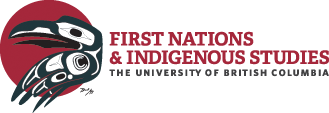Special Projects
…Much of the content on Indigenous Foundations is designed to provide you with concise information on key topics in Indigenous studies. Some parts of this site, however, contain special…
Klamath Termination
…choice. You might also like to check out our other IVT implementation on this site. If you still encounter problems, see our help page . Descriptions of the complex and…
Video Resources
…pages throughout the site, but you can also access them directly through this section. Below are short descriptions of the archives with links to more information, but you can also…
ILO Convention 169
…http://pro169.org/ This site’s many resources are primarily geared toward Indigenous leaders’ promoting the use of Convention 169 in their communities. Books & articles International Labour Organization. “Monitoring Indigenous and Tribal…
Cedar
…a forest utilization site containing a CMT created prior to 1846 is protected by law.10 Today, Aboriginal peoples continue to create new CMTs as part of their cultural and economic…
The Indian Act
…Back. Volume 1. Ottawa: the Royal Commission on Aboriginal Peoples, 1996. 235-308. Steckley, John L. and Bryan D. Cummins. “Chapter Twelve: The Royal Proclamation and the Indian Act.” Full Circle:…
Mapping Tool: Kitsilano Reserve
…False Creek, in what is now Vancouver, British Columbia, was the site of an ancient village known in the Musqueam language, hən’q’emin’əm’, as sən’a?qw and in Skwxwú7mesh as Sen’ákw….
Welcome to Indigenous Foundations
…to the topic of the Indian Residential Schools, see Government Policy: The Residential School System. Special Project: The Berger Inquiry. This site now includes a special project on the MacKenzie…
Terminology
…“Aboriginal peoples” (plural) indicates a number of separate Aboriginal populations. To capitalize or to not capitalize? There is no official consensus on when to capitalize certain terms. Some people consider…
Indian Status
…their band, and their registration number. “Status Indians” are wards of the Canadian federal government, a paternalistic legal relationship that illustrates the historical imperial notion that Aboriginal peoples are “children”…

